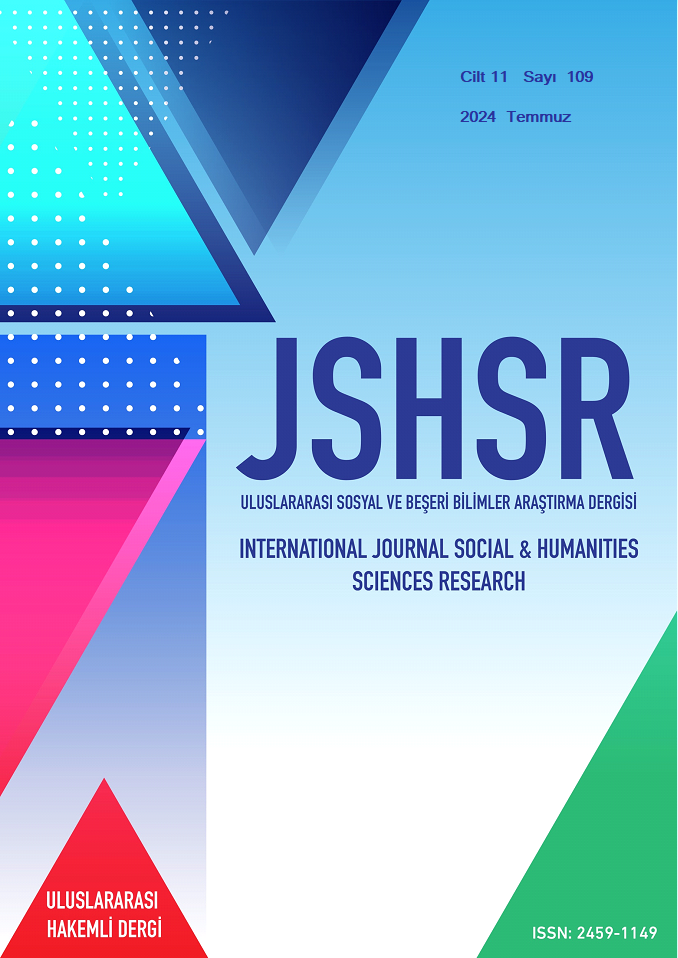18-20 Yaş arası Bireylerde Dijital Oyun Bağımlılığı ile Serebral Lateralizasyon ve Dikkat Becerisi Arasındaki İlişkinin İncelenmesi
DOI:
https://doi.org/10.5281/zenodo.12819530Özet
Bu çalışmada, hareketsiz gençlerde dijital oyun bağımlılığı ile serebral lateralizasyon ve dikkat becerileri arasındaki ilişkinin incelenmesi amaçlanmıştır. Örneklemi oluşturan bireyler randomizasyon yöntemi ile seçilmiştir. Çalışmaya 18-20 yaş aralığındaki 100 hareketsiz birey gönüllü olarak katılmıştır. Çalışma kapsamında bireylere dijital oyun bağımlılığı ölçeği ile serebral lateralizasyon ve dikkat testleri uygulanmıştır. İstatistiksel işlemler için SPSS 22.0 (SPSS Inc., Chicago, Illinois, ABD) programı kullanılmıştır. Değerler ortalama, standart sapma ve standart hata olarak sunulmuş ve 0,05 anlamlılık düzeyinde incelenmiştir. Normalliği test etmek için Shapiro-Wilk testi yapılmıştır. Gruplar arası farklılıkların analizinde tek yönlü varyans analizi ve LSD post-hoc testi kullanılmış, elde edilen değerler arasındaki ilişkinin incelenmesinde Pearson korelasyon testi uygulanmıştır. Elde edilen sonuçlara göre dijital oyun bağımlılığı ve serebral lateralizasyon ortalamaları açısından uygulamalar arasında istatistiksel olarak anlamlı bir fark saptanmamıştır (p>0,05). Benzer şekilde alt boyutlar bazında dijital oyun bağımlılığı ile dikkat becerileri arasında anlamlı bir ilişki olmadığı belirlenmiştir (p>0,05). Sonuç olarak gençlerde dijital oyun bağımlılığı ile serebral lateralizasyon ve dikkat becerileri değerleri arasında pozitif bir etki olmadığı söylenebilir.
Referanslar
Bisiach, E., Mini, M., Sterzi, R., & Vallar, G. (1982). Hemispheric lateralization of the decisional stage in choice reaction times to visual unstructured stimuli. Cortex, 18(2), 191-197.
Cingoz, Y. E. (2017). Examining the relationship between hand preference and success in karate and taekwondo athletes by gender (female-male) [Unpublished Master's Thesis]. Institute of Social Sciences, Muğla University.
Hazar, E., and Hazar, Z. (2019). Digital Game Addiction Scale for University Students (Adaptation Study). Journal of Sports Sciences Research, 4(2), 308-322.
Hazar, Z. (2016). The effect of games involving physical activity on digital game addiction of secondary school students aged 11-14 [Doctoral thesis]. Institute of Educational Sciences, Gazi University.
Johnston, D. W., Shah, M., & Shields, M. A. (2007). Handedness, time use and early childhood development (IZA Discussion Paper No. 2752). Institute for the Study of Labor.
Kars, G. B. (2010). The effect of violent computer games on aggression in children [Unpublished Master's thesis]. Institute of Health Sciences, Ankara University.
Kaya, A. B. (2013). Development of the online game addiction scale: Validity and reliability study [Unpublished Master's thesis]. Institute of Educational Sciences, Gaziosmanpaşa University.
Kaymak, S. (2003). The effect of attention training program on the development of attention skills of 2nd and 3rd primary school students [Doctoral thesis]. Institute of Social Sciences, Ankara University.
Kojima, R., Sato, M., Akiyama, Y., Mizorogi, S., Shinohara, R., Suzuki, K., et al. (2019). Problematic internet use and its associations with health-related symptoms and lifestyle habits among rural Japanese adolescents. Psychiatry and Clinical Neurosciences, 73(1), 20-26.
Loffing, F., Schorer, J., Hagemann, N., & Baker, J. (2012). On the advantage of being left-handed in volleyball: Further evidence of the specificity of skilled visual perception. Attention, Perception, & Psychophysics, 74(2), 446-453.
Menteşe, B. (2019). The effect of sex steroid hormone levels on nerve conduction velocity, reaction time, cognitive functions and cerebral lateralization in healthy adults [Doctoral thesis], Institute of Health Sciences, Manisa Celal Bayar University.
Ögel, K. (2012). Internet addiction, understanding the psychology of the internet and coping with addiction. Türkiye İş Bankası Cultural Publications. (ss. 47-60).
Prot, S., Anderson, C. A., Gentile, D. A., Brown, S. C., & Swing, E. L. (2014). The positive and negative effects of video game play. In Media and the well-being of children and adolescents (pp. 109-114).
Sachlikidis, A., & Salter, C. (2007). A biomechanical comparison of dominant and nondominant arm throws for speed and accuracy. Sports Biomechanics, 6(3), 334-344.
Tan, Ü., & Çalışkan, S. (1987). Allometry and asymmetry in the dog brain: The right hemisphere is heavier regardless of paw preference. International Journal of Neuroscience, 35(3-4), 189-194.
World Health Organization. (2019). Sharpening the focus on gaming disorder. Bulletin of the World Health Organization. Available at: https://www.who.int/bulletin/volumes/97/6/19-020619/en/
Yen, J. Y., Yen, C. F., Chen, C. S., Tang, T. C., & Ko, C. H. (2009). The association between adult ADHD symptoms and internet addiction among college students: The gender difference. Cyberpsychology & Behavior, 12(2), 187-191.
Ziyagil, M. A., Gursoy, R., Dane, Ş., & Yuksel, R. (2010). Left-handed wrestlers are more successful. Perceptual and Motor Skills, 111(1), 65-70.
İndir
Yayınlanmış
Nasıl Atıf Yapılır
Sayı
Bölüm
Lisans
Telif Hakkı (c) 2024 International Journal of Social and Humanities Sciences Research (JSHSR)

Bu çalışma Creative Commons Attribution 4.0 International License ile lisanslanmıştır.


